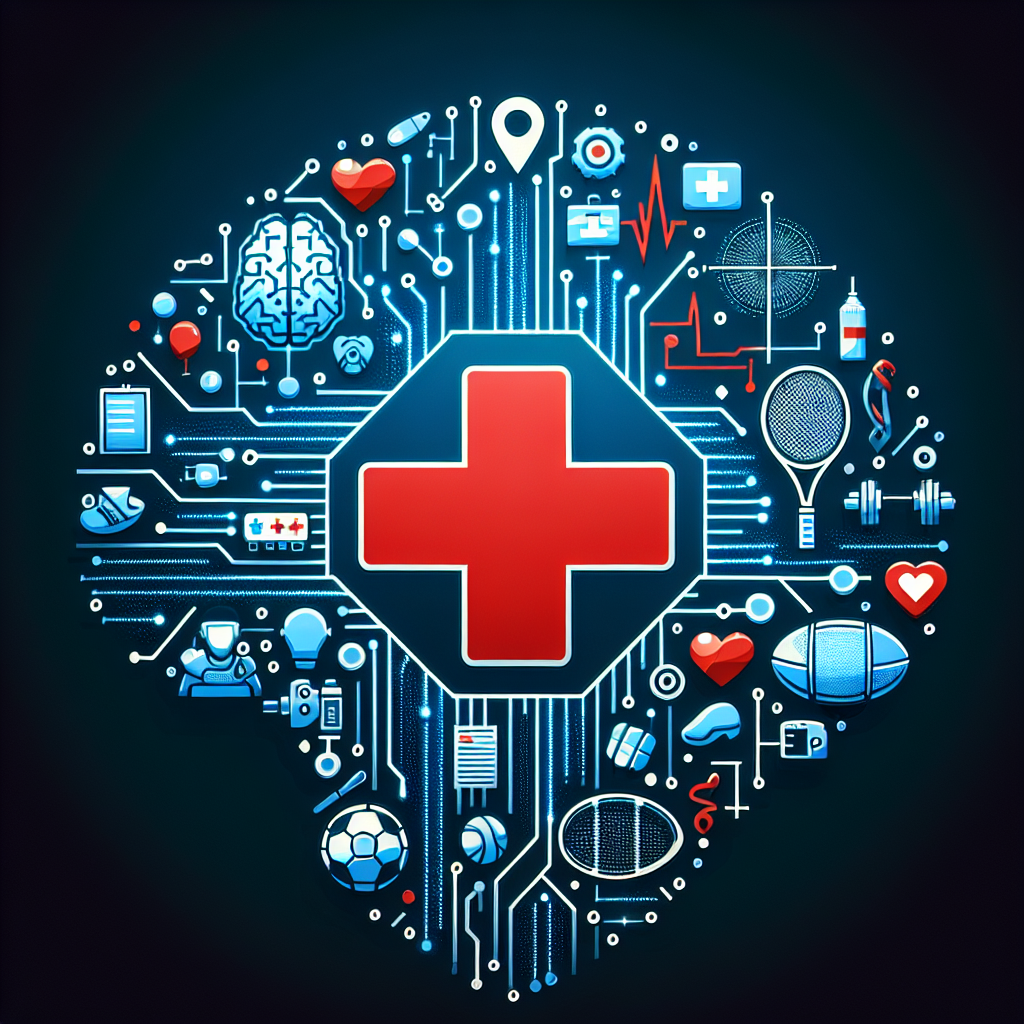Artificial intelligence (AI) has revolutionized many industries, and sports medicine is no exception. With the advancement of AI technology, healthcare providers are now able to detect sports injuries more accurately and quickly than ever before. AI algorithms can analyze medical images, patient histories, and other data to identify injuries and predict recovery times. This has the potential to improve outcomes for athletes and reduce the risk of long-term damage.
In this article, we will explore how AI is being used to detect sports injuries, the benefits of this technology, and some of the challenges that still need to be overcome.
How AI is used to detect sports injuries
One of the key ways that AI is being used to detect sports injuries is through the analysis of medical images. For example, AI algorithms can be trained to recognize patterns in x-rays, MRIs, and CT scans that are indicative of specific injuries. This can help radiologists and other healthcare providers to quickly and accurately diagnose injuries, leading to faster treatment and better outcomes for patients.
AI can also be used to analyze other types of data, such as patient histories, symptoms, and treatment plans. By looking at this information in combination with medical images, AI algorithms can help healthcare providers to make more informed decisions about how to treat sports injuries. For example, AI could predict how long an athlete will need to recover from an injury based on their age, fitness level, and the severity of the injury.
Benefits of using AI to detect sports injuries
There are many benefits to using AI to detect sports injuries. One of the main advantages is speed. AI algorithms can analyze medical images and other data much faster than a human healthcare provider, allowing injuries to be detected and treated more quickly. This can help athletes to get back to their sport sooner and reduce the risk of long-term damage.
Another benefit of using AI is accuracy. AI algorithms are able to analyze large amounts of data and recognize patterns that may not be obvious to a human healthcare provider. This can help to ensure that injuries are detected early and treated appropriately, leading to better outcomes for patients.
AI can also help to reduce costs by streamlining the diagnostic process and avoiding unnecessary tests and treatments. By accurately detecting injuries and predicting recovery times, AI can help healthcare providers to make more efficient use of resources and reduce the overall cost of care.
Challenges in using AI to detect sports injuries
While AI has many potential benefits for detecting sports injuries, there are also some challenges that need to be overcome. One of the main challenges is the need for high-quality data. AI algorithms rely on large amounts of data to learn and improve their accuracy, so it is important to have access to high-quality medical images, patient histories, and other information.
Another challenge is the need for collaboration between healthcare providers and AI developers. Healthcare providers need to be trained in how to use AI effectively and integrate it into their practice. They also need to work closely with AI developers to ensure that the algorithms are accurate and reliable.
Finally, there are ethical considerations to take into account when using AI to detect sports injuries. For example, there may be concerns about patient privacy and the potential for bias in AI algorithms. It is important to address these issues and ensure that AI is used in a responsible and ethical manner.
FAQs about AI and the detection of sports injuries
Q: Can AI replace human healthcare providers in detecting sports injuries?
A: While AI has the potential to improve the accuracy and speed of detecting sports injuries, it is unlikely to replace human healthcare providers entirely. AI algorithms are still limited by the quality of data they have access to and may not be able to take into account all of the nuances of a patient’s condition. Healthcare providers are still needed to interpret AI results, make treatment decisions, and provide personalized care to patients.
Q: How accurate is AI in detecting sports injuries?
A: The accuracy of AI in detecting sports injuries can vary depending on the quality of data and the algorithms used. In general, AI has been shown to be as accurate as or even more accurate than human healthcare providers in some cases. However, it is important to remember that AI is not infallible and should be used as a tool to support healthcare providers rather than replace them.
Q: Are there any limitations to using AI to detect sports injuries?
A: One limitation of using AI to detect sports injuries is the need for high-quality data. AI algorithms rely on large amounts of data to learn and improve their accuracy, so it is important to have access to accurate and reliable medical images, patient histories, and other information. Another limitation is the potential for bias in AI algorithms, which can lead to inaccurate results. It is important to address these limitations and ensure that AI is used responsibly and ethically.
In conclusion, AI has the potential to revolutionize the detection of sports injuries by improving accuracy, speed, and efficiency. By analyzing medical images, patient histories, and other data, AI algorithms can help healthcare providers to quickly and accurately diagnose injuries and predict recovery times. While there are still challenges to overcome, the benefits of using AI in sports medicine are clear. As technology continues to advance, we can expect to see even more innovative applications of AI in the detection and treatment of sports injuries.

